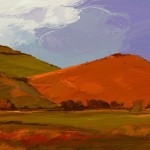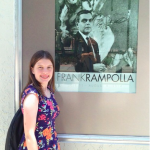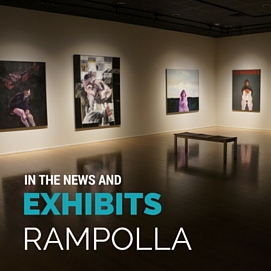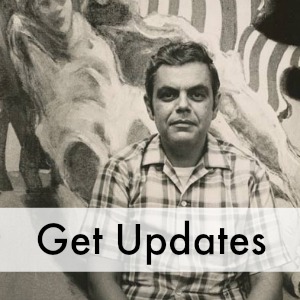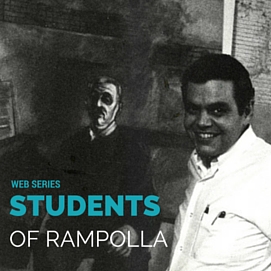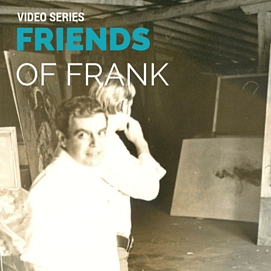A Timeless Tribute to a Friend and Great Teacher: Frank Rampolla
Teacher at the Ringling School of Art: 1960–1968. University of South Florida, 1968 -71.
He came here inconspicuously where his presence was casual, quiet, and polite, but his exit was awesomely accomplished and great. Within a span of just twelve years, he became a monumental figure in Sarasota and Tampa. The irony was that this sunny, beachy, tourist state was the least place that would be expected to host the most profound thinker and teacher, in the State of Florida. He was a Great Man, and a wonderful Human Being who had a sense of humor and well-directed sarcasm. There will never be another like Him here, or anywhere.
He started with Michelangelo… and he then showed Michelangelo’s parallel in music – Beethoven. He mentioned Raphael, and brought forth Mozart. He taught of the Spanish inquisition, and of Dostoyevsky. There was an undercurrent of the incarnate and spirit, kneaded together in flesh and the movement of life and History that Rampolla beheld. He knew of Religion, and Circumstance, of Culture and Literature. He touched his students deeply, some of whom wished to transcend their mortality, being forever transformed as beings who only lived to create timeless images, that held the mysteries of form in existence.
Rampolla taught of the immortality of great cultural achievements, of the intertwining of tragic death and exuberant life, of mad artists and voluptuous women, of Saints and Tyrants, of Humankinds tragedies and the fortuitous irony of events that fostered writing, art, music, and the theater.
He knew of the underpinnings of life and its mysteries, of Man’s virtues and sins. He touched young minds, and all minds who came to learn. Rampolla used the talents that God gave him to reach and teach, to create prolifically, and to share his resources with all those around him. He was a great Man who – while in life left a legacy of hard work, yet in death sustains the cultural leanings of those who were fortunate to have met him and know him.
In quiet solace we think of Rampolla when in those intimate moments, we recall his genius, and we remember his teachings; we transcend the transitory trivia that surrounds us and we travel (with him) to the silent secrets that tell of eternal truths that give understanding and meaning to life.

